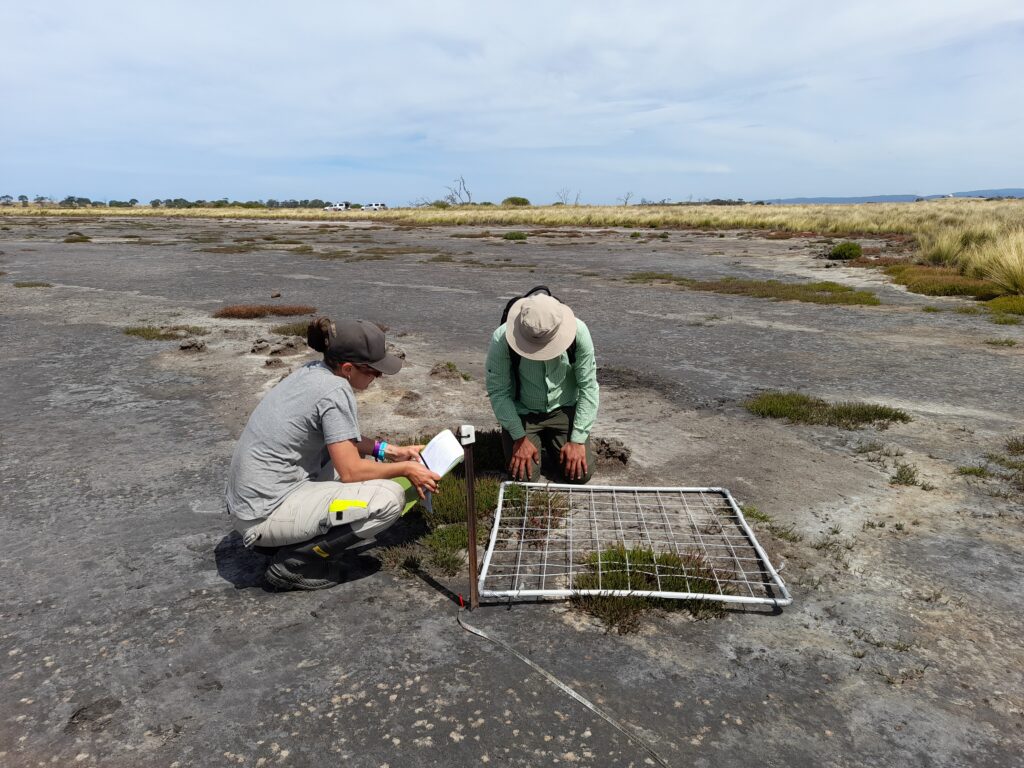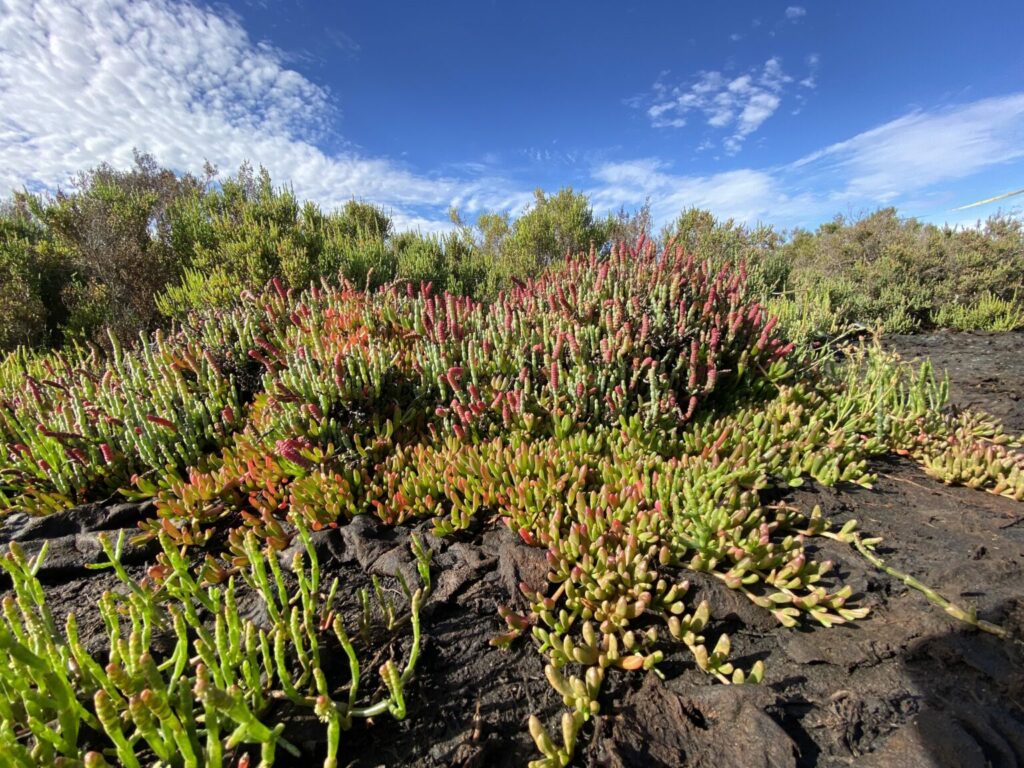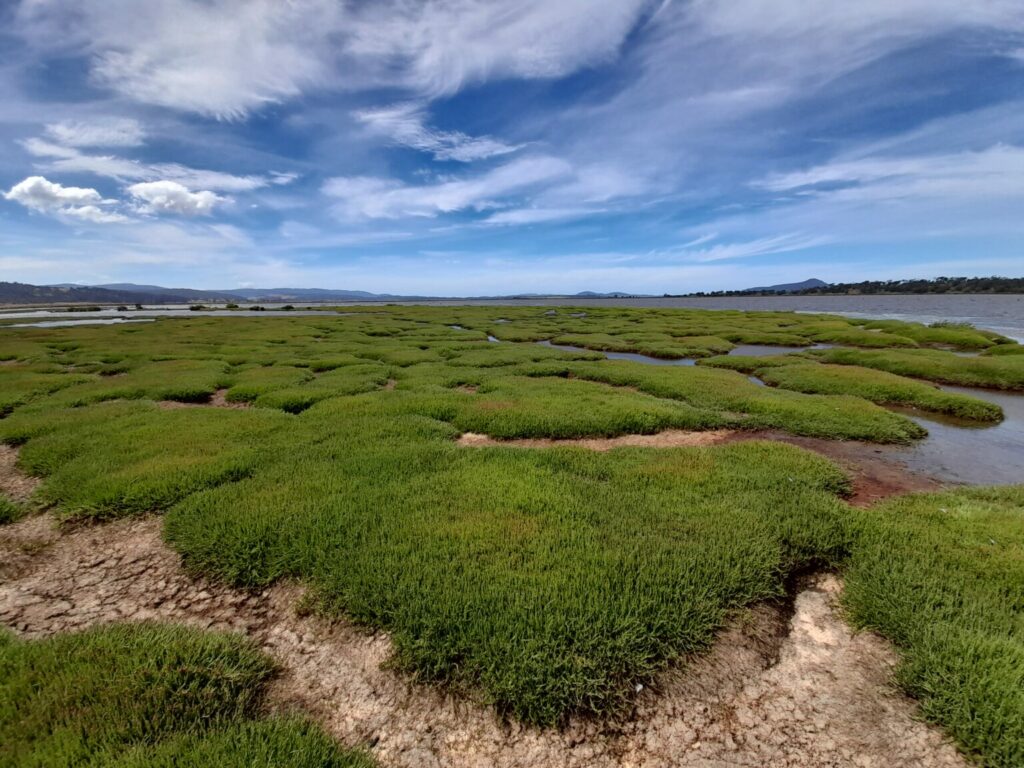Moulting Lagoon, an internationally important wetland located on Tasmania’s east coast, is one of Tasmania’s most extensive areas of temperate coastal saltmarsh. Saltmarsh is considered to be at high risk of extinction in the medium-term future as it is under threat from a variety of pressures including damage by vehicles, stock trampling and browsing, coastal development and sea level rise.
Coastal saltmarsh includes highly specialised plants such as succulent shrubs, herbs, grasses, rushes and sedges. This important plant community provides habitat for animals, is an important food source for birds and fish, regulates the water quality and helps protect coastal foreshores.
As part of our project to improve the Ramsar-listed Moulting Lagoon and Apsley Marshes, we have been working with private landholders and project partners pakana Services, the Tasmanian Land Conservancy and the Tasmanian Parks and Wildlife Service to protect and enhance saltmarsh located on the Moulting Lagoon foreshore. Over the past couple of years, these efforts have resulted in the installation of 7 km of fencing across land surrounding Moulting Lagoon. This fencing has restricted access of both grazing livestock and vehicles to 595 ha of wetland vegetation, including important buffer land and areas of saltmarsh.
Before any on ground works commenced, the University of Tasmania carried out some baseline monitoring of the saltmarsh within the project area. In early March 2023, they undertook follow-up monitoring to measure change and the success of the project works. Although some species of saltmarsh can take around 20 years to re-establish, some species are already showing signs of recovery.
This project is supported by NRM South, through funding from the Australian Government’s National Landcare Program.


